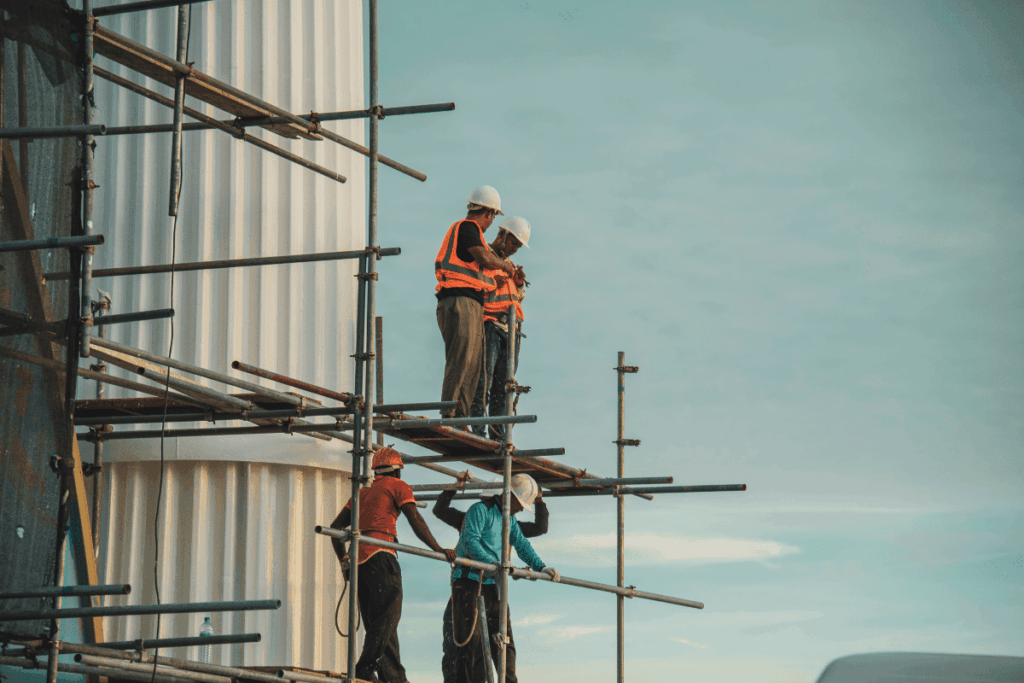Safety is a core driver of human behaviour. When we feel safe, our nervous system is calm and well-balanced. Our breathing is steady, our muscles are relaxed, and our minds are open to focus, creativity, and connection – all essential for producing our best work.
In contrast, the body’s stress response kicks in when we feel unsafe. Our heart rate quickens, muscles tense, and thoughts become preoccupied with self-preservation. This primal fight or flight response is essential for short-term survival, but it quickly erodes wellbeing and productivity when it becomes a chronic state.
While employers increasingly offer physical and mental health benefits, fewer commit to keeping their staff truly safe within and beyond the workplace. Yet, a wealth of workplace hazards, commuting concerns, and personal security risks pose a daily threat to employees.
This guide reveals some of the safety risks workers face, and how employers can mitigate them with a modern approach to employee assistance.
The importance of safety in the workplace
Let’s get one thing straight: health and safety isn’t optional. As a bare minimum, UK employers must meet compliance regulations set out by the Health and Safety Act at Work 1974 and the Management of Health and Safety at Work Regulations 1999 to protect all their workers. These encompass:
- Risk assessment
- Safe equipment and protective clothing
- First aid arrangements
- Fire safety measures
- Safety protocols for specific industries, such as construction or manufacturing
These are critical steps in supporting employee wellbeing, but they only address physical safety. Psychological safety is just as crucial for workers to feel secure and thrive at work. In fact, a study by Google found thatpsychological safety was the most important factor in creating successful teams.
The safety risks employees face
Employers strive to create safe and supportive environments, but employees face a range of risks that can undermine their sense of security. These include:
Common workplace risks
Employees in various roles encounter everyday risks that can disrupt their physical safety and mental wellbeing:
- Accidents or sudden illness: Even in well-monitored environments, unexpected health emergencies or injuries can occur.
- Lack of access to first aid or emergency equipment: Limited resources can leave workers without immediate or adequate help in critical situations.
- Exposure to violence or abuse: For employees who interact with the public, aggression, theft, or harassment can be an ongoing threat.
Unique risks for lone workers
The risks are amplified for lone workers, like security guards, cleaning staff, or delivery drivers, who are left unsupervised for long periods. Lone employees often lack the support systems available to teams, leaving them more vulnerable in emergencies or unsafe situations. For example,
- Emergency isolation: A lone worker experiencing a medical crisis or injury may struggle to raise the alarm for help.
- Threat of intrusion: An employee working alone in a building may need to deal with a break-in, and the theft and violence that may accompany such an event.
- Inadequate welfare: Someone working unsupervised doesn’t have anyone checking their basic needs are met, including food, hydration, and breaks.
Risks beyond work
Simply travelling to and from work presents different types of safety risks. Professional service workers, who make up 21.4% of the UK workforce, feel particularly vulnerable. Of these:
- 71% of professionals worry about their personal safety when working late
- 75% are concerned about personal safety during business travel
- 69% feel anxious about their safety while commuting
- 1 in 4 feel unsafe getting home after working late (increasing to 1 in 3 for women)
Create a culture of safety in the workplace with Sonder
Employees value 24/7 access to safety support, whether for emergencies, travel disruptions, or reassurance in daily life. According to People Safe research, 75% of women and 66% of men would use a personal safety app if offered it.
Sonder offers a modern alternative to employee assistance programmes that enables all workers to feel safe at any time of day or night. The app offers:
- Geo and environmental scanning to identify any local disruptions or incidents
- 24/7 harm prevention, critical incident response, and trauma recovery
- ‘Check on me’ and ‘Track my trip’ tools to ensure employee safety on the move
- Network of responders on the ground for emergencies and critical events
One Sonder member reports how the platform provided reassurance while returning home from work:
“There were issues with the trains on my commute home, making me have to get off at a stop past my normal one, and where my car was parked. It was 6pm and already dark. As I was waiting, I remembered that I have access to Sonder. It took me about 30 seconds to initiate the ‘Check on me’ tool and for some reason I immediately felt just a tiny little bit better.”
Similarly, WHS and Injury ManagerFadia Nassif describes why Sonder has become “an essential toolkit” for Best&Less employees safe both during and after work hours.
“The personal safety tools such as smart check-ins and journey tracking are particularly vital for our frontline workers, especially given the rise in anti-social behaviour. We strongly encourage our Besties to utilise these functions when travelling to and from work.”
Ready to create a continuous culture of safety for your employees? Check out our Insider’s Guide to Employee Assistance Programs to explore Sonder’s 360-degree approach to employee care, then book a free demo to see our platform in action.



